Ensuring research informs conservation and restoration
The Research Centre for Ecosystem Resilience team (ReCER) team gathered at the Crommelin Field Station at Pearl Beach in May to ponder how to ensure our research continues to best inform the restoration and conservation of resilient ecosystems.
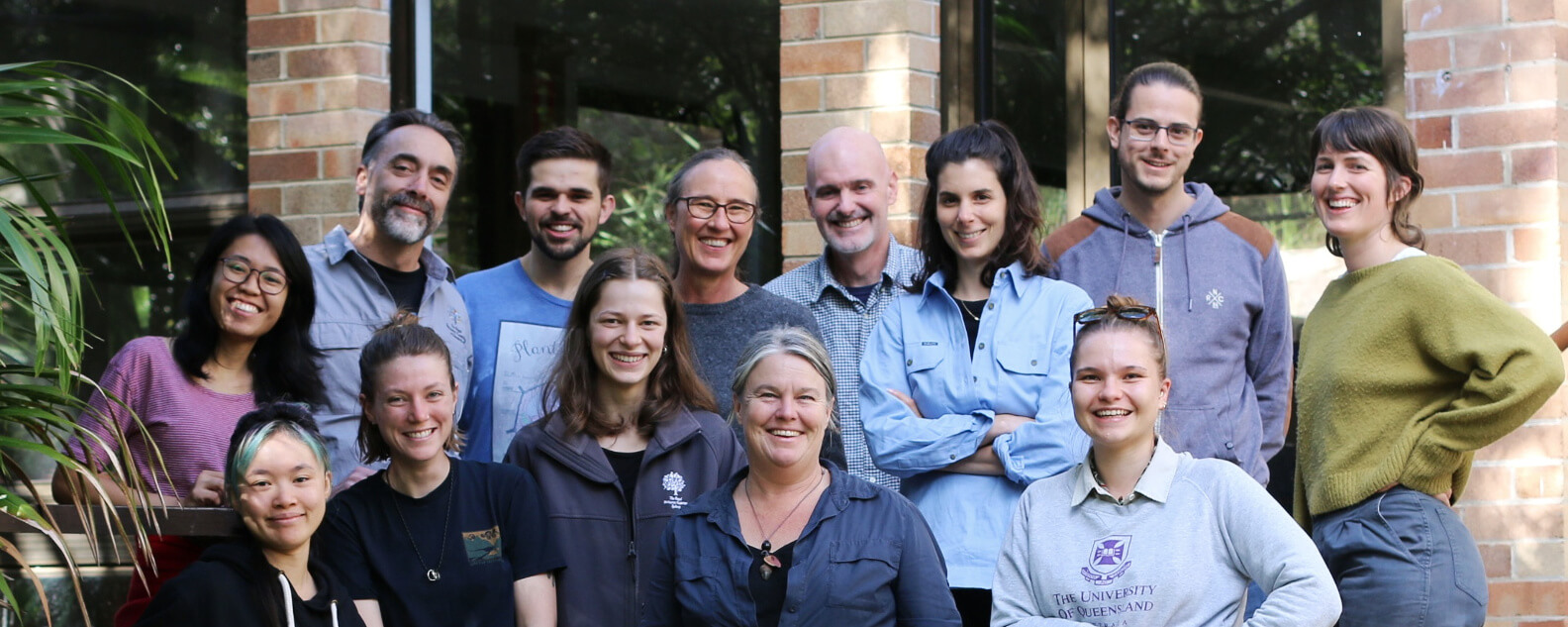
Discover how the Research Centre for Ecosystem Resilience team (ReCER) team are helping to develop innovative genomic workflow processes, tools and genomic research to help guide successful restoration and conservation projects.
Ensuring best-practice research and restoration
The Research Centre for Ecosystem Resilience team (ReCER) went to the Crommelin Field Station at Pearl Beach in May 2023 for a two-day workshop to discuss ways to ensure their research continues to inform best-practice restoration and conservation of resilient ecosystems. Maurizio Rossetto launched the retreat by suggesting the team “ask not what genetics can do for you, but what you can do for genetics”.
He was referring to our ongoing development of genomic workflow processes (or Knowledge Infrastructure, as Maurizio likes to call it). These innovative workflows have helped to shift genomics into a new phase where it is feasible to collect useful genomic information for a vast number of plant species of interest to threatened flora conservation practitioners and ecological restoration practitioners. We’ve moved beyond collecting genomic information species-by-species and now work on thousands of samples for tens of species at a time across regions (e.g. Big Scrub Rainforest Conservancy Science Saving Rainforests) and ecological communities (e.g. Cumberland Plain Woodland).
Image, top: Research Centre for Ecosystem Resilience (ReCER) staff at a team retreat in May 2023. Clockwise from top left: Samantha Yap, Maurizio Rossetto, Richard Dimon, Marlien van der Merwe, Jason Bragg, Manuela Cascini, Patrick Fahey, Monica Fahey, Saphira Bloom-Quinn, Tricia Hogbin, Eilish McMaster, Mira Jordan, and Karina Guo.
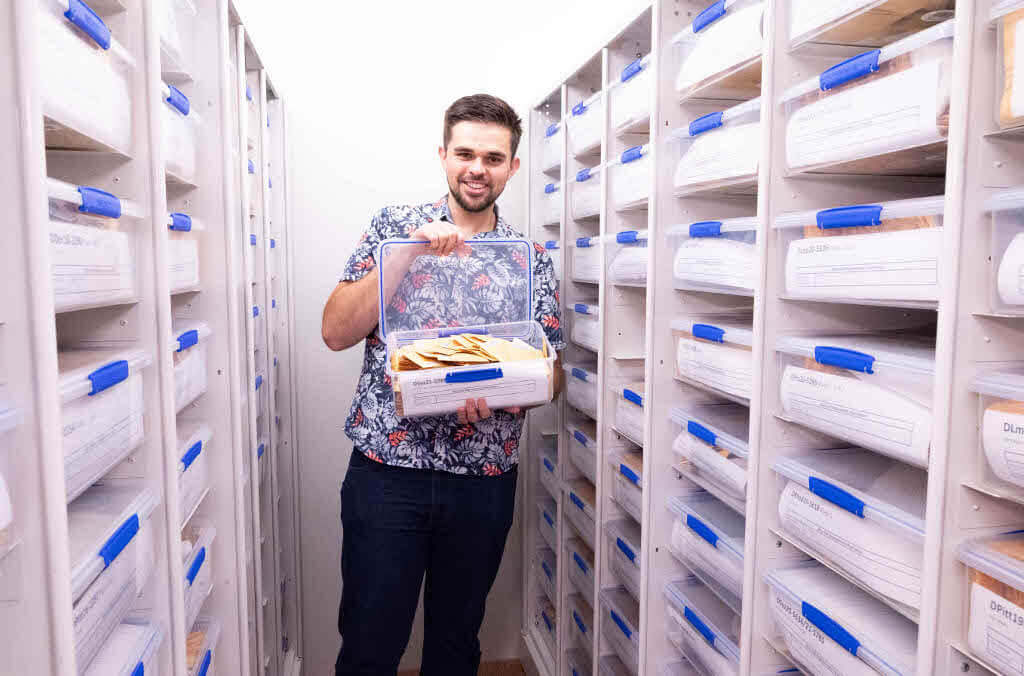
Richard Dimon with some of the 10,000 individually barcoded plant samples collected by ReCER for the for the Science Saving Rainforests Project. Photo credit: Renee Borrow, Big Scrub Rainforest Conservancy
Relevant workflow research papers:
- Applying simple genomic workflows to optimise practical plant translocation outcomes. Plant Ecology (2023)
- A conservation genomics workflow to guide practical management actions. Global Ecology and Conservation (2021)
- Restore and Renew: a genomics-era framework for species provenance delimitation. Restoration Ecology (2019)
Genomic tools
Jason Bragg next gave an overview of the techniques used by Research Centre for Ecosystem Resilience team (ReCER) and reviewed their suitability for restoration genomics, conservation genomics, phylogeography and phylogenetics. He then outlined some of the opportunities offered by other methods as they become more cost-effective (e.g., short and long read whole genome resequencing) and some of the challenges associated with data management and analyses of large, multispecies workflows.
Examples of application of whole genome resequencing:
- We’ve unveiled the waratah’s genetic secrets, helping preserve this Australian icon for the future. The Conversation (2022)
- Chromosome-level de novo genome assembly of Telopea speciosissima (New South Wales waratah) using long-reads, linked-reads and Hi-C. Molecular Ecology Resources (2022)
- Whole genome resequencing: Conservation genomics of Syzygium paniculatum Part II: evolutionary history and taxonomic implications. Unpublished report for the Saving our Species program.
Designing representative seedbanks and seed production areas
Using genomic research to help guide the establishment and maintenance of seedbanks and seed production areas (SPAs) was the next topic covered. Marlien van der Merwe outlined how genetic provenance information, like that provided by Restore and Renew, can be used to establish and monitor genetically representative seedbanks and SPAs and ultimately help increase the availability of appropriate provenance seed for native vegetation restoration.
ReCER has partnered with Murray Local Land Services to assess the genetic representativeness of their seed production areas. Marlien van der Merwe (ReCER) and Tash Lappin (Murray LLS) collecting samples for genetic analysis.
Relevant research papers:
- Capturing Genetic Diversity in Seed Collections: An Empirical Study of Two Congeners with Contrasting Mating Systems. Plants (2023)
- Plant collections for conservation and restoration: Can they be adapted and adaptable?Molecular Ecology Resources (2022)
- Conserving the genetic diversity of condemned populations: Optimizing collections and translocation. Evolutionary applications (2021)
Other topics covered over the two-day retreat included: how to inform policy and guidelines, and how we can better pitch our research outcomes to practitioners.
The retreat was followed by a field trip where new staff practiced using the Australian Institute of Botanical Science Field collection app, a key component of Research Centre for Ecosystem Resilience team (ReCER) genomic workflow process, that enables the team to process thousands of samples each month.
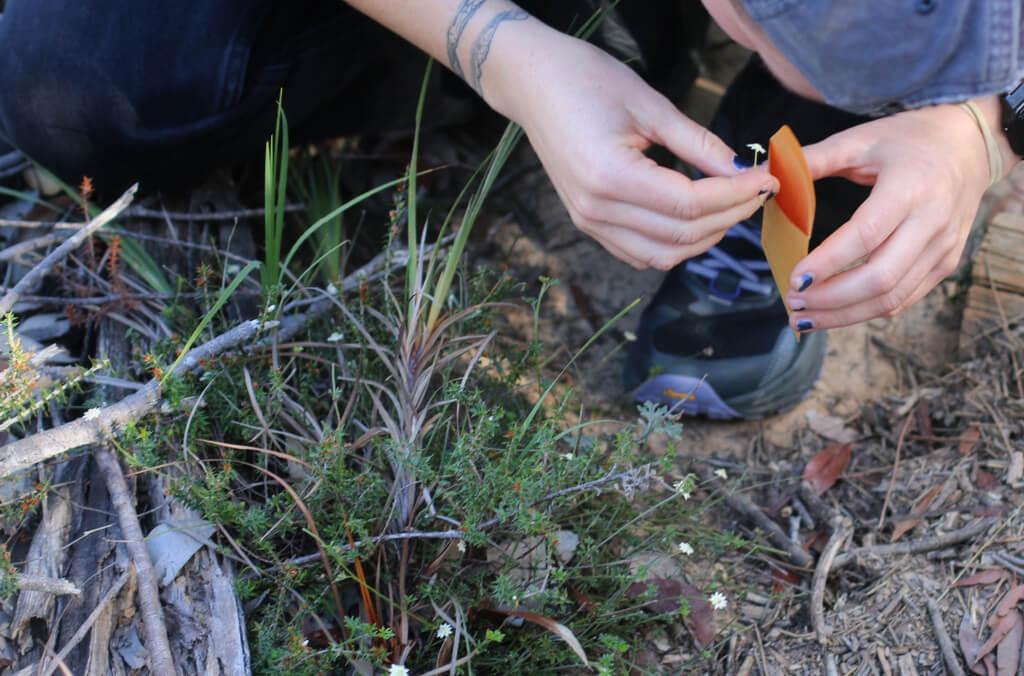
Using the Australian Institute of Botanical Science Field collection app to manage metadata of leaf samples collected for genetic analysis. 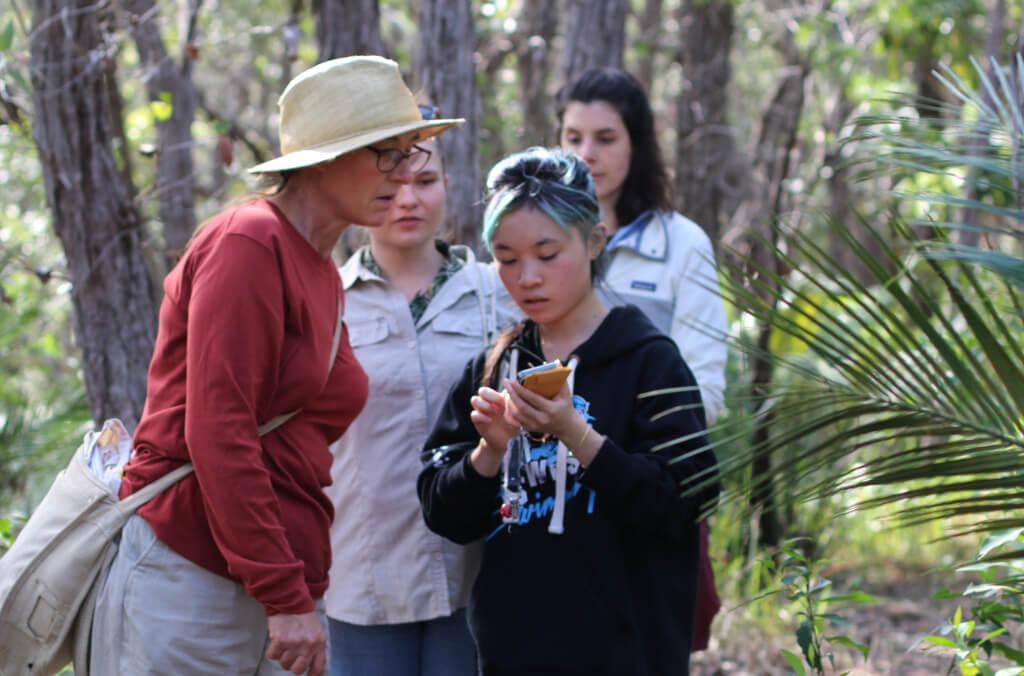

Related stories
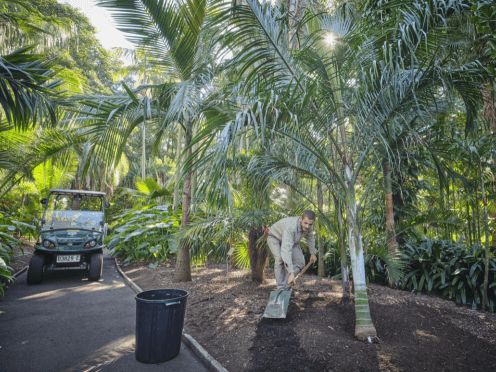
Botanic gardens across Australia and New Zealand are gearing up for Botanic Gardens Week running from 19 – 25 May.
Working with stakeholders from different Australian states, geneticists have helped to clarify taxonomy and conservation planning for seven leafless Bossiaea species.

Bunga Bangkai (Indonesian), Titan Arum or Amorphophallus titanum has the biggest, smelliest flower-spike in the world. It flowers for just 24 hours, once every few years… and in January 2025 one bloomed at the Royal Botanic Garden Sydney. Named Putricia by staff at the Botanic Gardens of Sydney, she quickly captivated people from all over the world, writes John Siemon, Director of Horticulture and Living Collections.